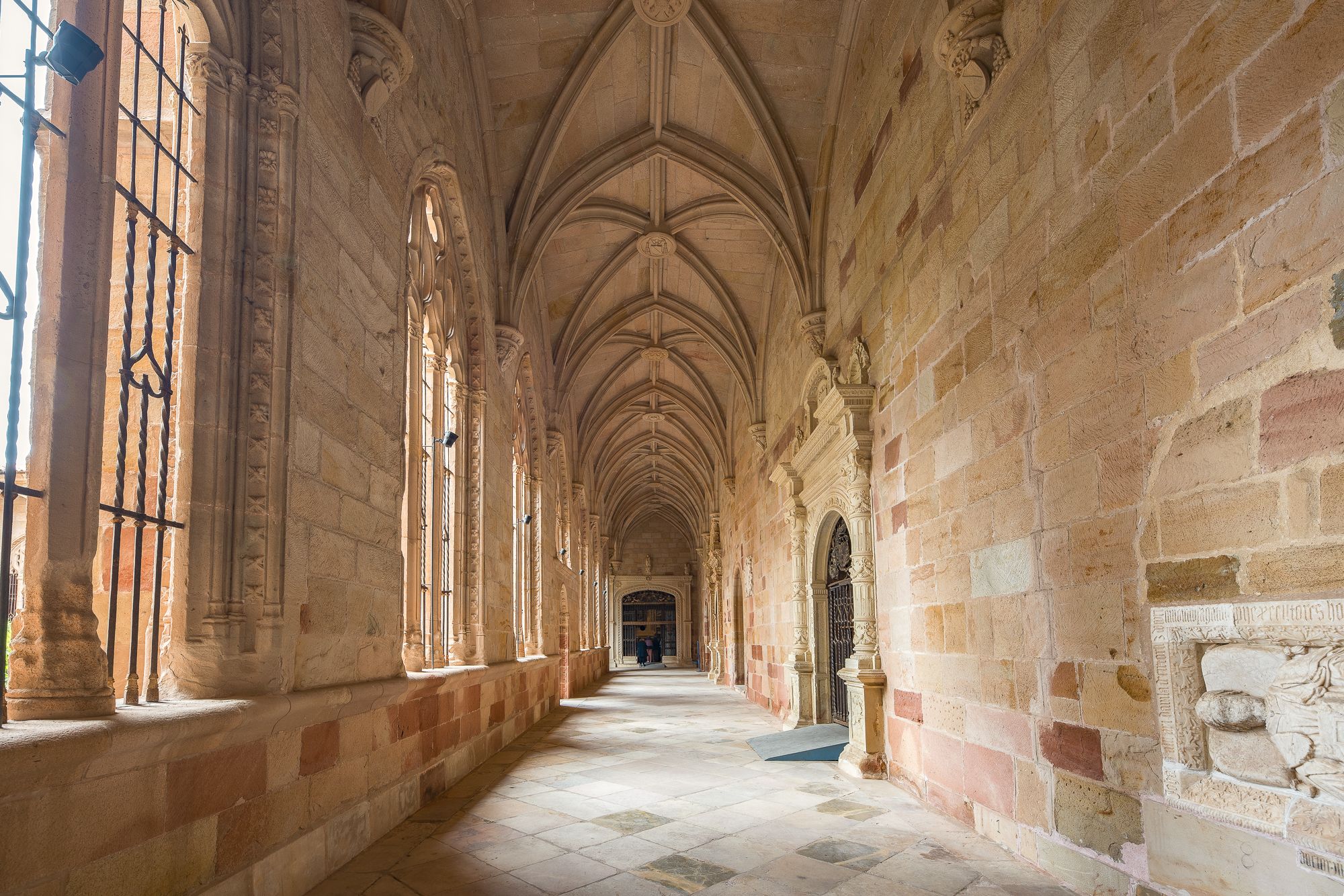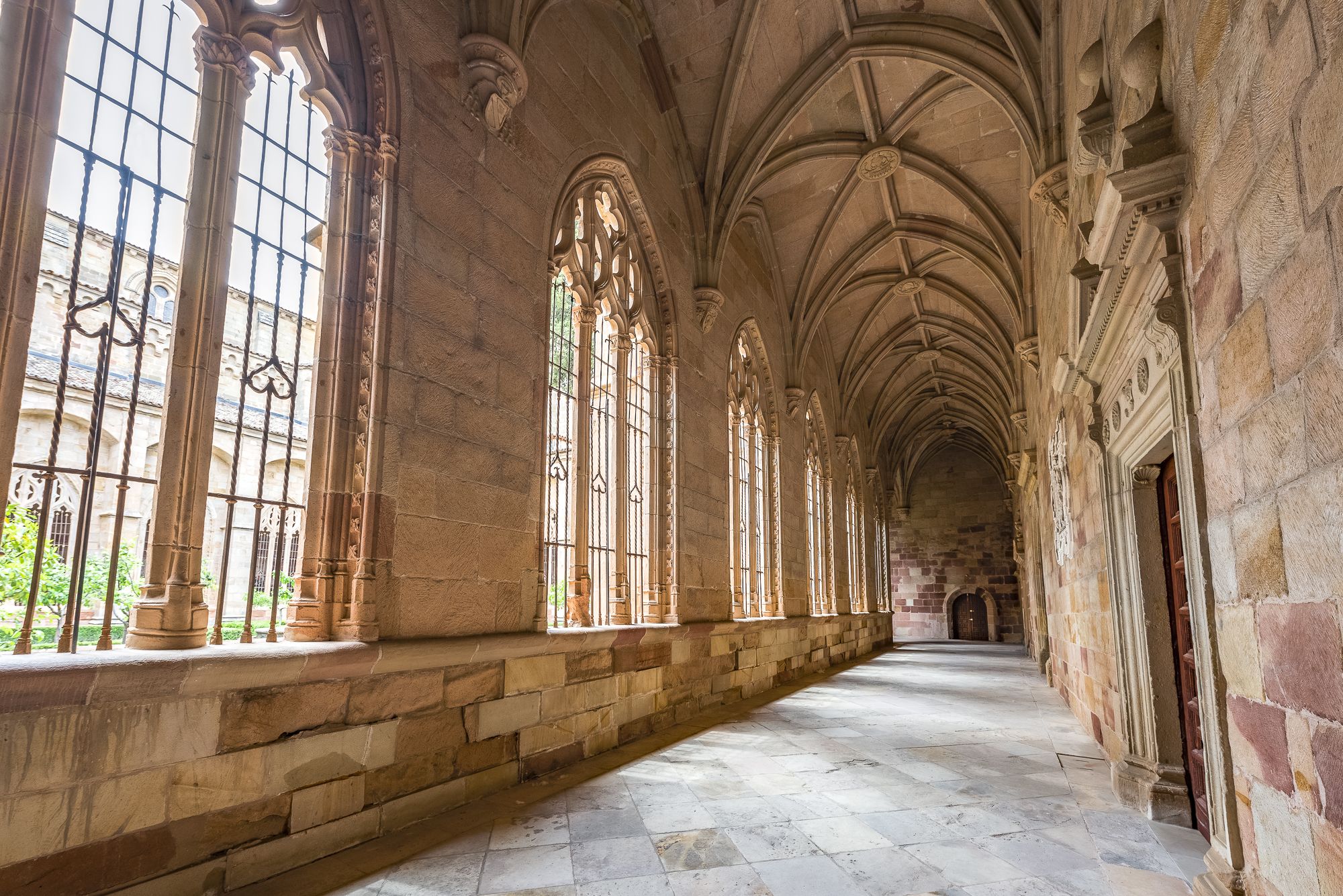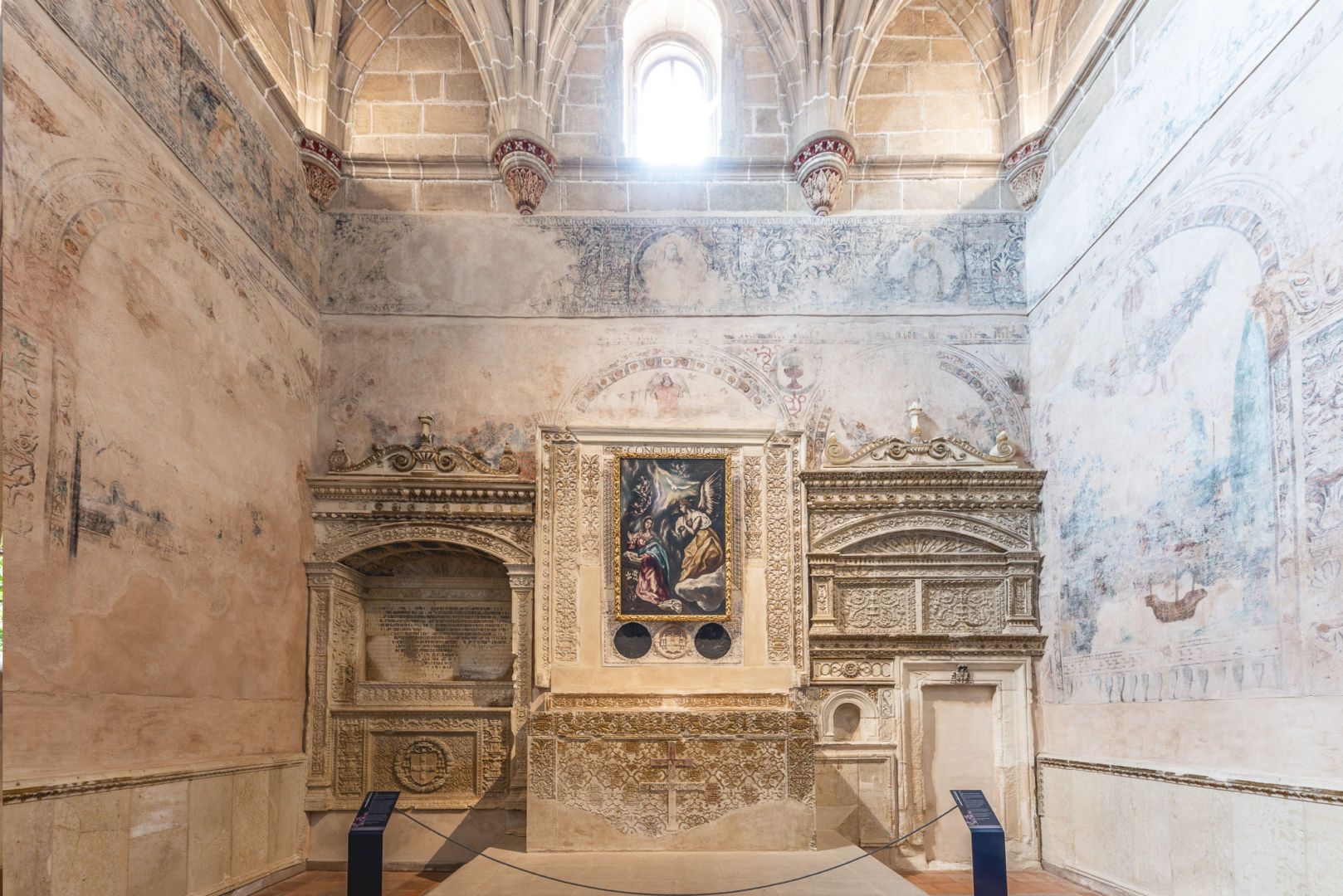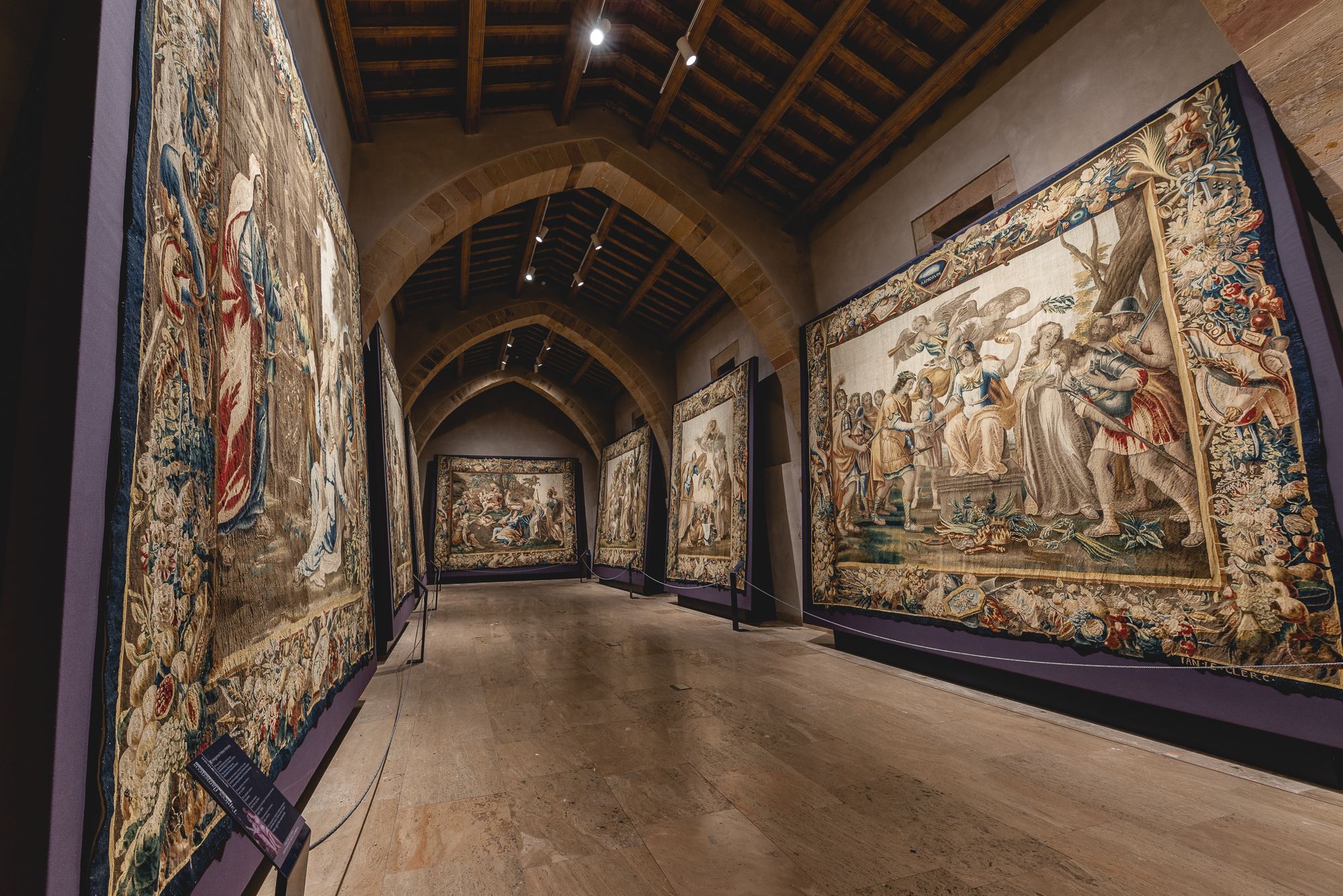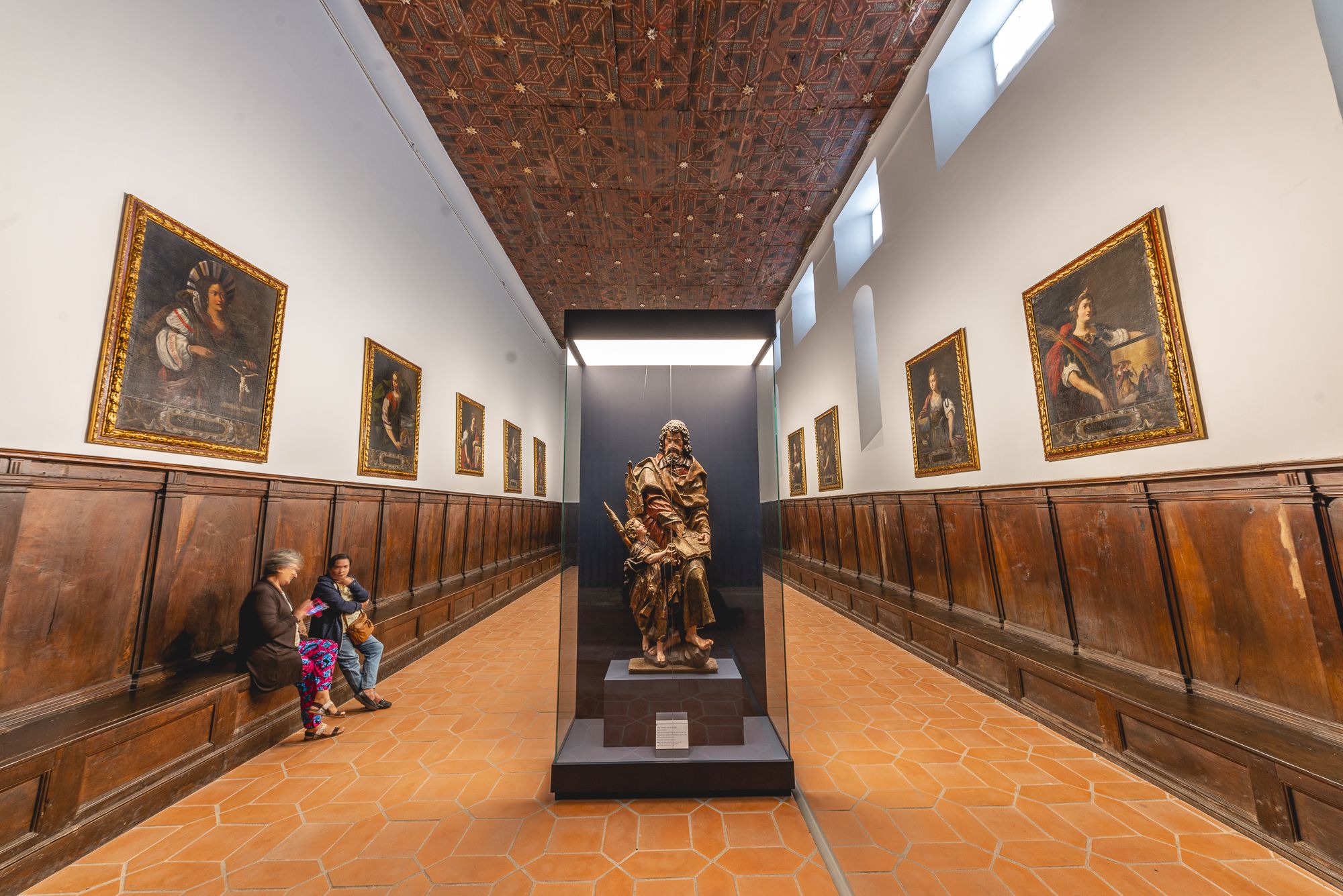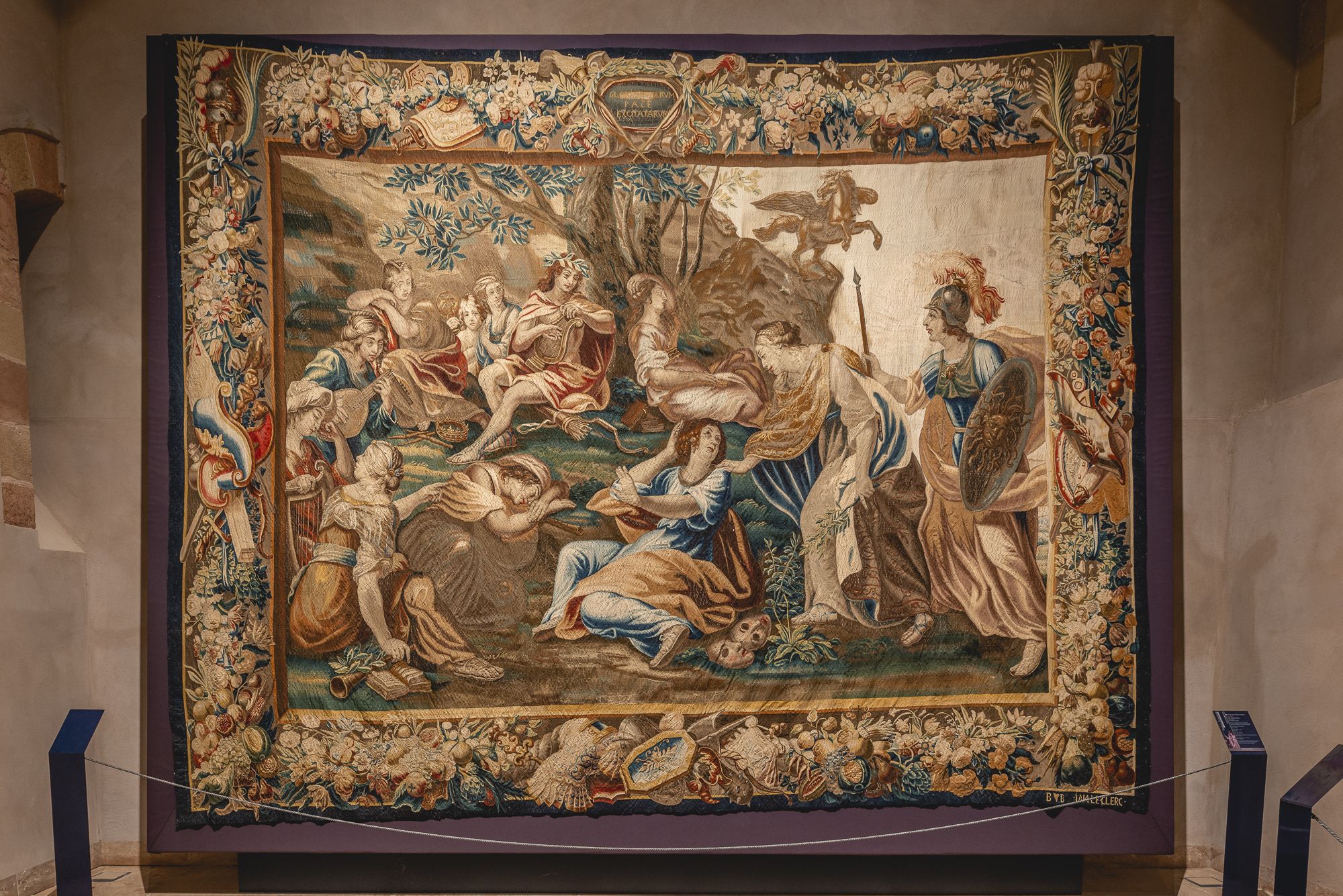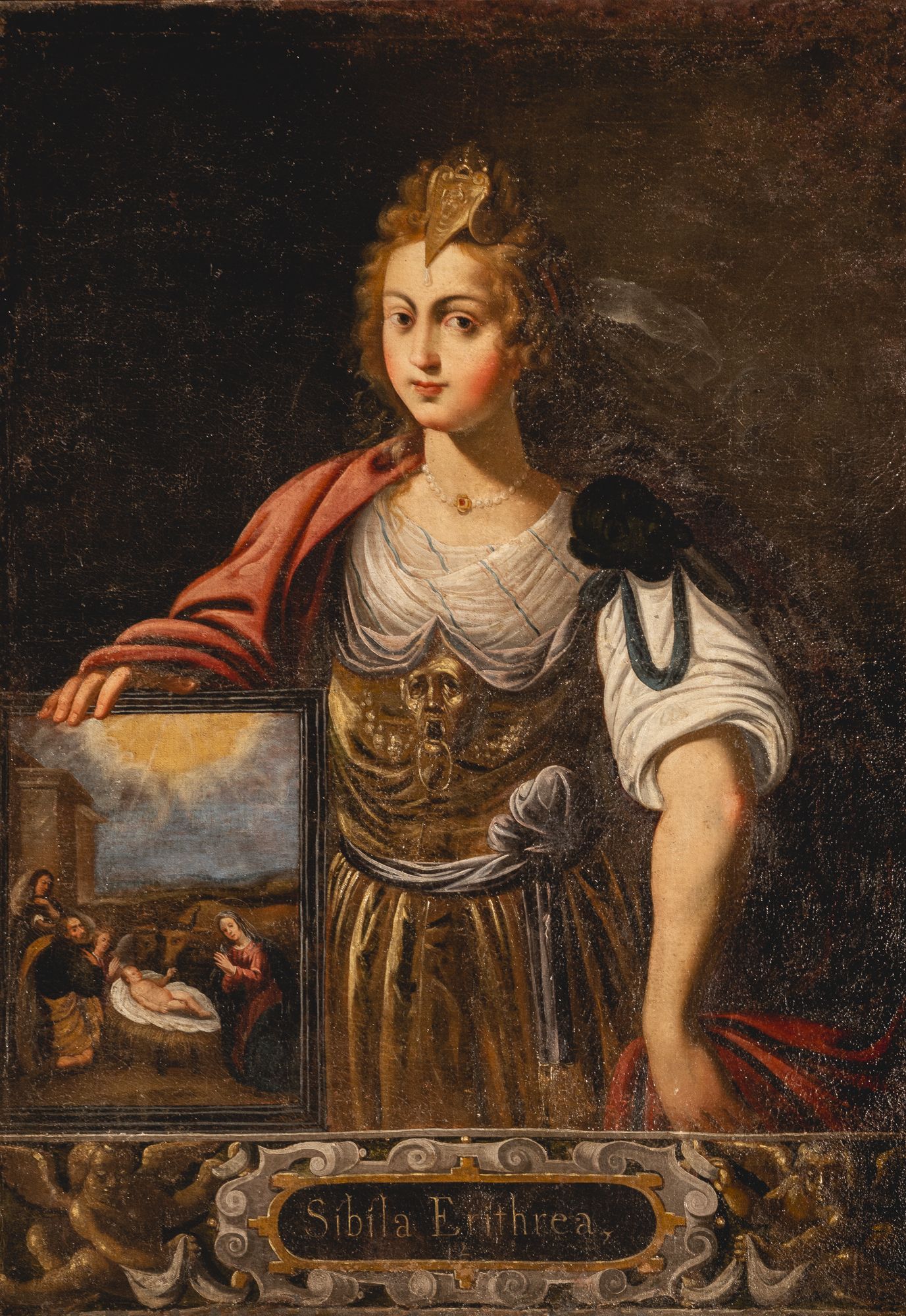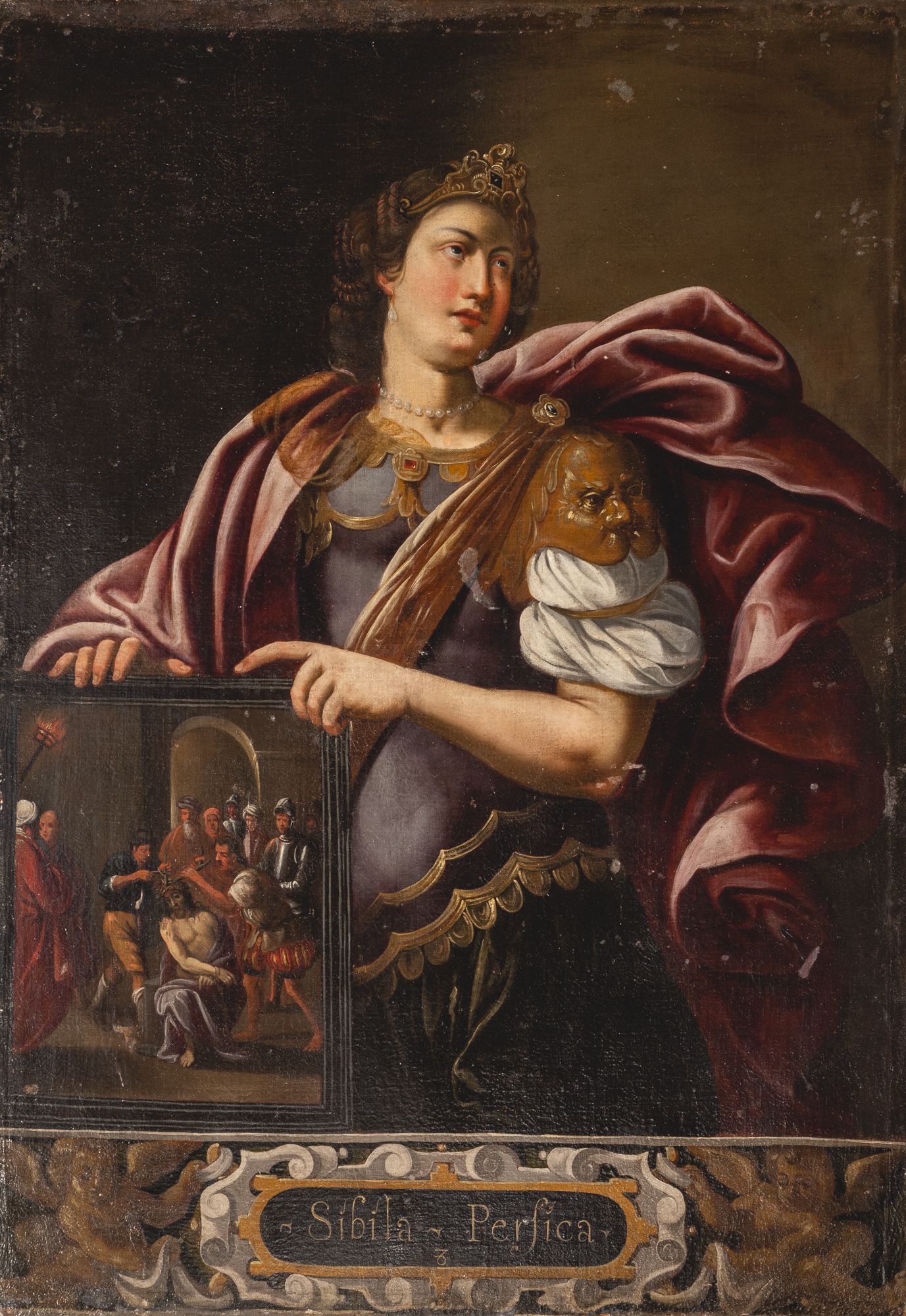he late-Gothic design of the cloister dates to the end of the 15th century, and it was built in the early-16th. With a square ground plan, the cloister adjoins the north side of the cathedral. It is formed by four galleries, each of which has seven ogival high windows, closed by high, slender columns and adorned with Gothic lattice work. Each gallery measures 40 meters in length. At a later date, buttresses were added between the high windows which support segmental arches which, in turn, sustain the cloister cornice in which, under the direction of Alonso de Vozmediano (1498-1519), teams of stonemasons worked, led by Fernando and Pedro de las Quejigas, Juan de la Gureña, or Gurueña, and Juan de las Pozas (1498-1519), filling the cloister as a whole with a sense of space and a monumental quality in accordance with the new aesthetic taste. The segmental arches were completed between 1515 and 1537.
The cloister is vaulted with ribbing and nerving featuring beautiful, ornately-carved key voussoirs.
The vault keystones and corbels, supporting main, supporting and transversal arches, feature alternately the escutcheons of Cardinal Bernardino López de Carvajal (1495-1511) and the Chapter. In the center of the inner walls is represented the coat of arms of Bishop Francisco Santos Bullón (1750-1761), a tribute on the part of the Chapter Corporation in recognition of that bishop’s generous contribution to the paving of the cloister floor. Leading off the side walls are various chapels of enormous interest.
In the center of the cloister garden is a graceful, beautiful Renaissance water spout, forming part of the finely-carved stone fountain, originally used to supply the chapter brothers and many inhabitants of the city with fresh drinking water. Beautiful gates with semicircular arches and Plateresque decoration, closed by grilles in the same style, lead into the central garden of this cloister.
Chapel of La Concepción
his is the most interesting of all the chapels in the cloister. It was founded by Diego Serrano, abbot of Santa Coloma and was completed in 1509. It is in Flamboyant Gothic style. It is closed to the exterior by a fine wrought-iron grill, made by the maestro Usón (1498-1519). Its middle frieze is exactly the same as the upper frieze in the grille in the choir at Alcalá de Henares, and the ornamental flowers and leaves are as graceful and well-formed as those at Alcalá, as are the bases. As regards the rest, the decoration of the bars in the second section is completely new, whilst the two sirens forming the central section are of little interest. But, overall, this grille is, perhaps, the most harmonious and graceful of all those in the cathedral. The entrance is made up of a broad segmental arch, highly molded and finely adorned with traditional Gothic floral motifs. It is flanked by two bare pilasters, their bays covered by grotesques, and crowned by a frieze which is al so richly decorated by a sculpture of the Virgin in the center and at the top.
The interior of the chapel is very fine, with two galleries with balustrades resting on Gothic teeth with Plateresque decoration, the two styles blending harmoniously. From here, a door leads to the sacristy. The vault, with multiple ribs of tiercerons and polychrome, decorated keystones, gives the chapel a pleasing final aesthetic touch.
The pictoric works contained in this chapel, surprising for their value and importance, have been little studied to date.
The most outstanding of these are the mural paintings, which create a world full of symbol and allegory taken from the literature of visions and the beyond, immersed in the cultural currents of the Middle Ages and Latin tradition.
The artist who painted these images was Francisco de Pelegrina (1531-1532), a painter linked to the plastic works in Toledo Cathedral. The painter was paid in 1532, though Diego Serrano commissioned the work in 1517. They cost 10,000 maravedíes.
The Renaissance space is a private, funeral area exalting the symbolic city of Jerusalem, the Holy City represented in the mural paintings. However, without doubt, the most outstanding element are the Plateresque arches and the series of landscapes which create a chaotic scenery whose final purpose is to depict a false garden, created for the cultivated, humanist visitor.
This is a vision of the Earthly Paradise in Sigüenza Cathedral, one already present in the Egyptian and Greco-Roman cultures. This Triumph over Death is expressed in the symbols of Abundance – the cornucopias – in the garlands, and in the exuberant floral decoration which forms the outstanding element in this site, where eternal spring reigns.
The most outstanding elements in the vistas afforded by this belvedere are, particularly, the Siren and the Cypress. 80th images form part of typical literary symbols and the emblematic uses of the time, and allude to the story of the garden beyond, a visualization of the poetic journey to Paradise locating the funeral chapel as a place in the Hesperides, representing the survival of the soul when it becomes separated from the body.
Cathedral Museum

